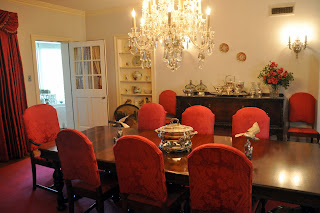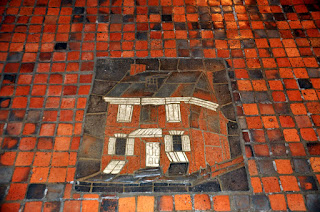Leila (Lee) Wilson Werner, Bob's mother at the age of 89, passed peacefully on September 16, 2015 after several years of living with Alzheimer disease.
Lee was born on March 12,1926 in Newton, Massachusetts to Edgar G. and Catherine Beard Wilson. She attended James Madison University and graduated from the University of Rhode Island with a Bachelor of Arts Degree in English.
She married Robert Rehm Werner (Bob) upon his graduation from West Point in 1950. Together they raised four children. Bob was a career officer in the Army Corps of Engineers and they lived in numerous states and foreign countries. They shared adventures living in Japan, Germany, France, California, Texas, Florida, Virginia, South Dakota and Ohio.
Lee was the foundation of the family. Her husband Bob, being an Army colonel, was in and out, here and there, always busy with Army stuff while Lee it seemed never had a day off. She worked hard, was a strong woman, and was full of energy and perseverance.
Raising 4 children, alone at times while her husband was on hardship tours or was working long hours, could not have been easy. Yet, Lee ventured out alone with her four children tent camping while Bob was away, she cooked daily (in a very organized fashion), sewed all the girls’ clothes, drove her children to every activity imaginable and even did 150 mile round trips to the commissary with a Styrofoam ice chest, kids in tow in a vehicle with no air conditioning in the high temperatures of the Florida summers. She soldiered on and never gave a glimpse to her kids into the tremendous challenges that some days surly brought.
While her husband was on hardship tour, living under the ice caps of Greenland, she facilitated the exchange of audio tapes (reel to reel) with their Dad every week or two – one side was for everyone and the other side was just for her.
When the family moved to Virginia, she had, for the first time, a house to own and she went about making a home out of it with her usual vigor. In fulfilling her Army Officer wife’s duties, she held cocktail parties and entertained friends in her home, and cheerfully attended the numerous balls and promotion parties.
Once Bob and Lee became empty nesters, she very much enjoyed working at Algan. She was an avid tennis player and theatergoer, and volunteered many hours in the community. She enjoyed taking walks, loved nature, and also loved watching her beloved Cavs and Indians play. But, she was most happy at the yearly family reunions, especially when the grandchildren came along.
Those around her learned a lot, not only from the things she said but simply from the way she lived her life. She had an unfailing strength and grace and good humor too. And those qualities continued to shine through even as Alzheimer disease took its toll.
Lee will be taken to West Point Cemetery, where she will be laid to rest with her beloved husband, Bob Werner.
She will be greatly missed by her children, Jacqueline Werner-Gavrin and her husband Marc; Robert Werner, Jr. and his wife Teri; Mary Smith and her husband Chris; and Judith Werner and her husband, Dan Borden; and her grandchildren, Anneka and her husband Dan Klein; Elizabeth and Ariel Werner-Gavrin; Suzanne Werner, and Paul, Garrett and Ryan Nugent; and Aaron and Kevin Smith.
Lee was born on March 12,1926 in Newton, Massachusetts to Edgar G. and Catherine Beard Wilson. She attended James Madison University and graduated from the University of Rhode Island with a Bachelor of Arts Degree in English.
She married Robert Rehm Werner (Bob) upon his graduation from West Point in 1950. Together they raised four children. Bob was a career officer in the Army Corps of Engineers and they lived in numerous states and foreign countries. They shared adventures living in Japan, Germany, France, California, Texas, Florida, Virginia, South Dakota and Ohio.
Lee was the foundation of the family. Her husband Bob, being an Army colonel, was in and out, here and there, always busy with Army stuff while Lee it seemed never had a day off. She worked hard, was a strong woman, and was full of energy and perseverance.
Raising 4 children, alone at times while her husband was on hardship tours or was working long hours, could not have been easy. Yet, Lee ventured out alone with her four children tent camping while Bob was away, she cooked daily (in a very organized fashion), sewed all the girls’ clothes, drove her children to every activity imaginable and even did 150 mile round trips to the commissary with a Styrofoam ice chest, kids in tow in a vehicle with no air conditioning in the high temperatures of the Florida summers. She soldiered on and never gave a glimpse to her kids into the tremendous challenges that some days surly brought.
While her husband was on hardship tour, living under the ice caps of Greenland, she facilitated the exchange of audio tapes (reel to reel) with their Dad every week or two – one side was for everyone and the other side was just for her.
When the family moved to Virginia, she had, for the first time, a house to own and she went about making a home out of it with her usual vigor. In fulfilling her Army Officer wife’s duties, she held cocktail parties and entertained friends in her home, and cheerfully attended the numerous balls and promotion parties.
Once Bob and Lee became empty nesters, she very much enjoyed working at Algan. She was an avid tennis player and theatergoer, and volunteered many hours in the community. She enjoyed taking walks, loved nature, and also loved watching her beloved Cavs and Indians play. But, she was most happy at the yearly family reunions, especially when the grandchildren came along.
Those around her learned a lot, not only from the things she said but simply from the way she lived her life. She had an unfailing strength and grace and good humor too. And those qualities continued to shine through even as Alzheimer disease took its toll.
Lee will be taken to West Point Cemetery, where she will be laid to rest with her beloved husband, Bob Werner.
She will be greatly missed by her children, Jacqueline Werner-Gavrin and her husband Marc; Robert Werner, Jr. and his wife Teri; Mary Smith and her husband Chris; and Judith Werner and her husband, Dan Borden; and her grandchildren, Anneka and her husband Dan Klein; Elizabeth and Ariel Werner-Gavrin; Suzanne Werner, and Paul, Garrett and Ryan Nugent; and Aaron and Kevin Smith.

















































